Is grass-fed meat really better? And what’s the difference between grass-fed beef compared to grain-fed beef? Is it worth spending the extra money on for your health? And how can you even know what you’re buying?
Let’s discuss the different types of meat and if they really have any benefits. Then you can then decide if it’s better for you or not. There are many factors to consider including health, animal welfare, cost, environment, and nutrition.
Terminology can be tricky too. I have written a list of meat and farming definitions for you at the end of this page. This way, you can truly understand what you are buying and eating without confusion.
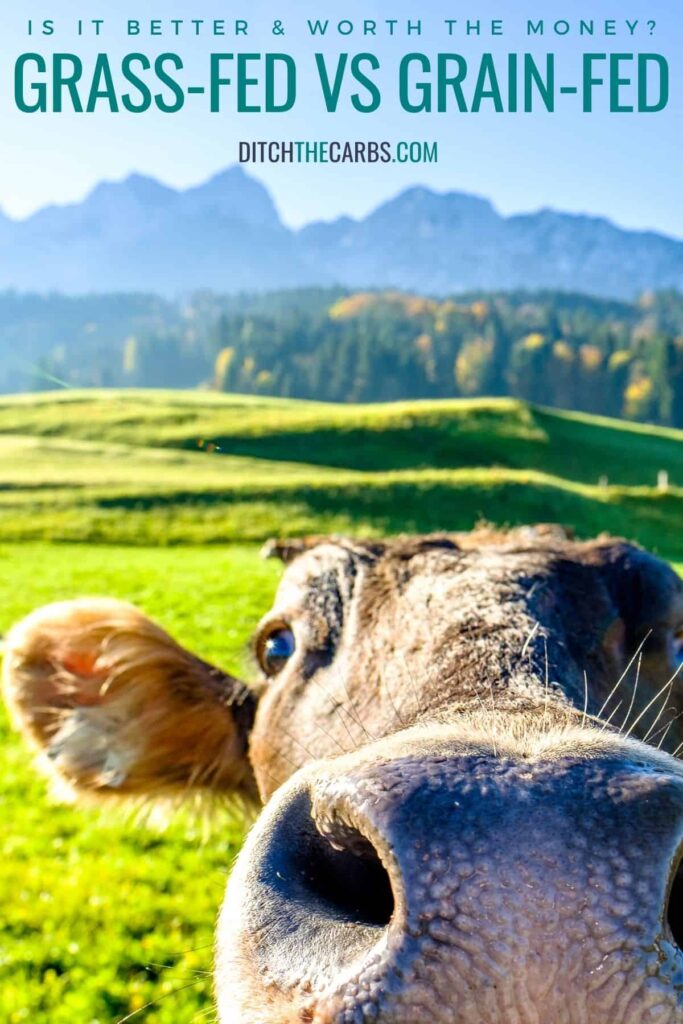
When you go to the grocery store, do you choose free-range chicken? Grass fed beef? Grain fed beef? Pasture-raised lamb? Organic bacon or cage-raised pork? What about barn raised chickens?
Are you ready to lose weight and heal your body for life (without dieting, drugs, or making yourself miserable)?

Our free on-demand video training will walk you through how to make this THE year you set health goals…and keep them.
Trying to choose the different types of beef that is best for you and your family is overwhelming. Especially if you eat a lot of meat on your ketogenic diet or carnivore diet.
What’s the difference between grass-fed and grain-fed meat?
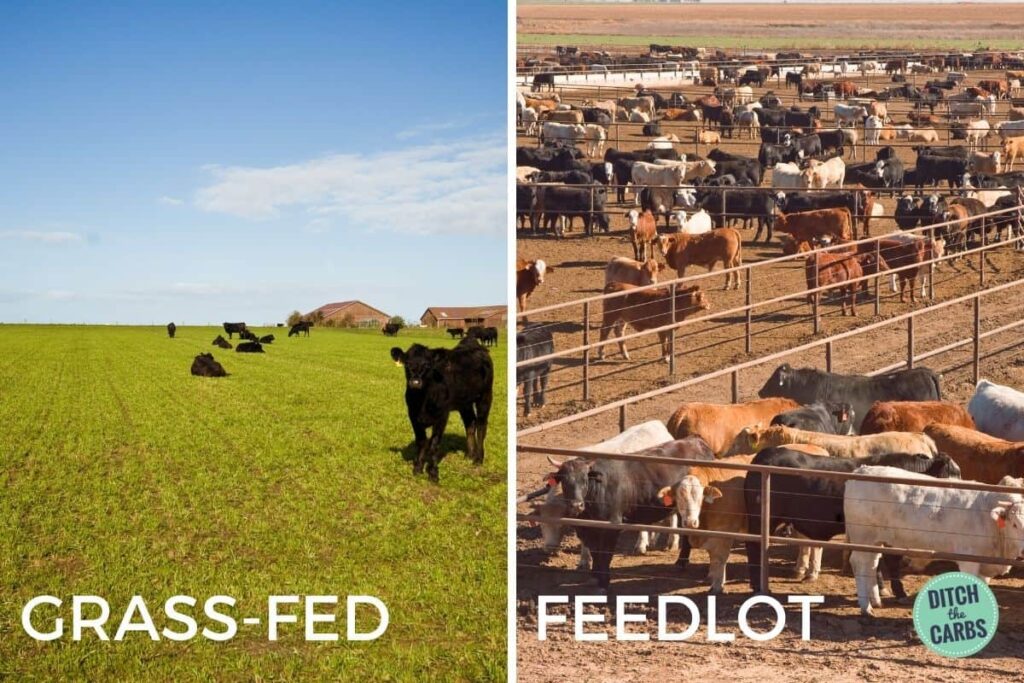
Grass-Fed
Meat that is grass-fed isn’t clearly defined but it usually means that the animals were able to eat fields of grass, wild weeds, and (accidental) insects naturally found in their paddock for their entire lives. This is generally how you see your local farmer taking care of their livestock.
Grass-fed cattle during extreme weather (or winter months) might be supplemented with nutrients and dried grass when conditions such as snow, cold weather, drought or floods prevent animals grazing outside or the grass growing season has stopped.
Grain-Fed
Grain-fed animals are fattened quicker and cheaper using grain feed such as soy, corn, and barley and often live in confined spaces rather than roaming paddocks and open pastures. These types of cattle are often seen in enormous numbers in feedlots in the United States.
Those against grain-fed meat, refer to the fact that soy, corn and barley is an unnatural diet for farmed animals and has a negative impact on their health and the quality of their meat.
Feedlot
Feedlot farming is mass-produced farming where animals are often kept in smaller areas of land (or confined) and fed intensively on grains. This method of farming is often referred to in the United States as concentrated animal feeding operations (CAFOs).
Believe it or not, some cattle are fed candy, sugar and sprinkles.
How to really know if our meat is grass-fed?
Unfortunately, some meat labelled as grass-fed may have come from animals that have actually been grain-raised then grass-finished or vice versa. There is no strict universal legal definition of what grass-fed claims actually refer to.
Even the USDA has revoked their definition of grass-fed. The American Grassfed Association however states “animals are born, raised, and finished on open grass pastures where perennial and annual grasses, forbs, legumes, brassicas, browse and post-harvest crop residue without grain are the sole energy sources, with the exception of mother’s milk, from birth to harvest.”
Even more confusing, some labels state “70% grass-fed” or something similar. This means is that while your meat was technically grass-fed for the majority of the time, there was 30% of that time that they weren’t.
Different countries refer to grass-fed animals free-range and pasture-raised. I am lucky enough to live in New Zealand where the climate and land allow the majority of our ruminant animals to be pasture-raised grass-fed year-round.
What’s grass-finished and organic meat?
All cattle start off life grass-fed calves when they were born. Then they remain grazing on grass in their field (grass-finished) or are moved to a feedlot where they will be finished on grains (grain-finished).
Animals that have been raised on grasses can be called 100% grass-fed or some have adopted the term grass-finished. Because of the removal of the USDA grass-fed definition in 2016, these terms are not regulated.
Does Grass-Fed = Organic?
Is grass-fed meat organic? Not necessarily. These are two completely different terms that relate to completely different aspects of raising animals. What they eat vs how the paddock has been treated with pesticides and certain chemicals.
Organic means that the animal was raised free from man-made antibiotics and hormones but these animals might actually be fattened using organic corn and organic grains.
Animals raised on organic feed without any chemicals are referred to as organic. But it’s not as simple as it sounds. They may use organic fertilisers and feed on organic grain. Organic does not mean grass-fed and organic does not automatically mean humanely raised. Confused? Yes, most consumers are.
What about “natural”?
What does natural mean? Well, not a lot. It’s another marketing term that isn’t clearly defined. This is why you need to trust where and who you’re buying your food from.
FAQ & definitions:
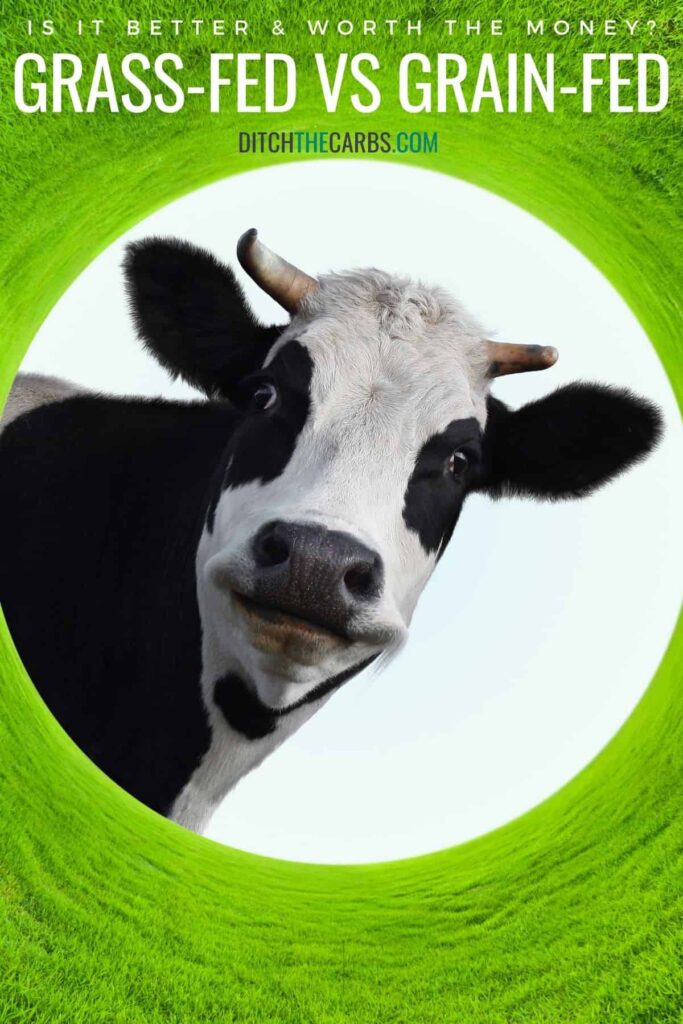
This term is most commonly used regarding chickens who are free to roam inside a barn. There is no access to the outside. Free-range chickens may have access to a barn but also have access to raom outside.
These are animals that have not been kept in gestation crates, farrowing crates or small confined crates. Crate-free is often synonymous with cruelty-free.
Also known as fish farming in large ponds, enclosures or tanks.
This refers to fish, usually salmon, that has been caught in the wild by fishermen and been sustainably harvested.
Animals can roam free outdoors without restriction during most of the day. They may still be enclosed and may still have access to an indoor shelter.
This is intensive animal farming in confined areas to intensify animal fattening as fast as possible.
Global Animal Partnership set standards for good farm animal welfare with quality living conditions, light, health, shelter, and to live a life free from injury, disease or illness. To be able to live in an environment free from stress, frustration, and pain. To be able to remain inquisitive, playful, and can express their natural behaviour. There are 3 levels of certification GAP1, GAP2 and GAP 3. Each with increasing levels of animal safety, health and freedom.
Federal regulations prohibit the use of hormones or steroids in poultry.
This generally refers to the animal’s food and soil. It must be free of pesticides, no GMO seeds and the animal must not receive any antibiotics or growth promotors.
Health benefits – fact or fiction?
Grass-fed meat can demand a high price tag, but what exactly are the benefits?
Consumer reports often state grass-fed products have significant differences in their nutrition. But how does high-quality grass-fed beef compare to that of the typical amount of beef?
Before we begin the comparisons, there something you need to understand with nutrition studies. Correlation and causation. Where a nutrient is found to have health benefits then a food is found to contain that nutrient, it does not mean automatically mean that food will give those health benefits.
For example, many blogs report grass-fed animals have more CLA (conjugated linoleic acid) than grain fed animals. And because CLA has health benefits such as reduced heart attack risk and reduced risk of cancer, eating grass-fed will give you these benefits. But is that extrapolation correct? Let’s discuss each health claim and what the studies actually show. For most claims, we will never have a clear answer.
Is it more nutritious?
Yes. Maybe. Grass-fed beef contains higher trace amounts of Omega 3 fatty acids, precursors to vitamins E and A.
Does it taste better?
Yes. Some consumers prefer the slightly earthy or grassy taste of grass-raised cattle. A cow’s diet has a remarkable effect on the taste of its meat. When Huffington Post did a taste test trial, 100% of the participants could taste, and preferred, the taste of grass-fed hamburgers.
Does it have fewer calories?
Yes. The meat from grass-fed cattle has less fat and fewer calories. By using a less intense fattening process towards the end of their life (ie: feeding on grass not fattening grains), and roaming free, these cattle have lower abdominal fat.
Does it help blood sugar control?
Yes and no. This is where correlation does not mean causation. Eating healthy fats and protein while avoiding sugar and carbohydrates does help improve blood glucose control. But do you need to eat grass-fed beef to achieve this? Yes, it will help, but conventional beef will have the same effect.
Does it have healthier fats?
Yes. Numerous studies have shown that cattle raised on grass has a higher percentage of omega 3 fatty acids, CLA (conjugated linoleic acid), and the precursors for Vitamin A and Vitamin E.
It is often thought that the fat content from grass-fed cows has a higher amount of nutrients, minerals, vitamin E and omega-3 fatty acids, compared to meat from grain-fed cows. It’s these omega-3 fats that are reported to offer health benefits such as the reduced risk of cardiovascular disease,
Does it help fight cancer?
No. This is a wild outlandish claim that has never been conclusively proven. Yes, reduced serum CLA increases the risk of breast cancer in postmenopausal women but this does not mean eating meat with a higher CLA directly reduces your risk.
Meat from animals only fed grass does have a higher amount of cancer-fighting antioxidants such as glutathione and superoxide dismutase but it has not been shown by eating meat like this will help fight cancer.
What is Omega 3?
It’s an essential fatty acid that has ANTI-inflammatory properties. Omega-6 fatty acids are INflammatory. We need to keep our ratio of Omega 6 : Omega 3 roughly in the range of 1:1 but our modern diet is more likely to be 15:1.
Reduced inflammation may help alleviate symptoms and pain in those with inflammatory conditions such as rheumatoid arthritis, it may help in neurological conditions such as ADHD, and may help reduce your risk of cancer, heart disease and even help improve asthma control.
Is the meat cleaner?
Yes and no. Did you know that 80% of antibiotics in the United States are used on animals? Antibiotics are used to prevent infections and marginally increase growth rates.
This overuse of antibiotics can cause antibiotic-resistant bacteria in animals and those bacteria can pass to humans by handling contaminated meat, or even fruit and vegetables contaminated by animal waste or fertiliser that contains animal waste.
So animals that did not receive antibiotics have a lower chance of having antibiotic resistance, BUT you can still be contaminated with these superbugs when touching pets and pet food. You can also contract e. coli food poisoning from lettuce!
Always practise good food hygiene when preparing and cooking ANY food.
Is beef production bad for the environment?
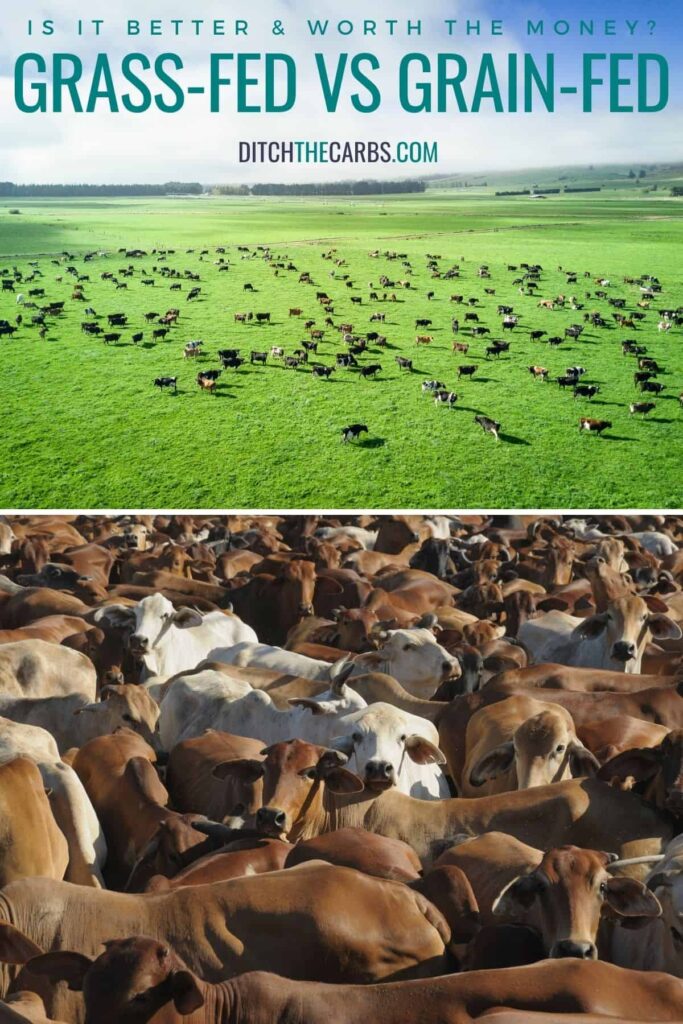
No. Well, maybe. It depends.
There has been a sudden rise in the promotion of eating less meat as if this is going to miraculously save the planet from greenhouse gas emissions and dirty waterways.
Vegans, in particular, are promoting the methane myth and cattle as public enemy number 1. Vegans also fight against animal cruelty, but some say that vegans actually kill more animals by virtue of second-order consequences.
The theory goes that cows produce methane, cows produce effluent waste that runs into the waterways and using fields to grow crops and vegetables instead will solve all these problems. But is it that simple? No. This deserves another article entirely, but for now, you may wish to read these articles and studies:
- Is grassfed meat and dairy better for human and environmental health?
- Green new meal: the unpalatable truth about veganism and climate change
- Animal source foods: Sustainability problem or malnutrition and sustainability solution? Perspective matters
It is an incredibly complex argument and there is currently insufficient evidence to conclusively answer this debate but it does appear grass fed well managed farms are better.
Do cattle that are raised in pastures use fewer fossil fuels than cows packed into feedlots? It depends on so many factors. But what we do know is that cows that graze on grass maintain and fertilise their land leading to the increased biodiversity of farmland ecosystems and improved quality of run-off water.
Whereas monocropping can cause nutrient loss, soil erosion and loss of biodiversity.
2020/2021 Factors
During the recent lockdowns, the global carbon emissions, air quality and cleanliness of our waterways have had the largest decline in history. Did the world stop eating beef? No. Did they stop travelling, driving, cruise ships and other environmental impactors? Yes.
Travel and fossil fuels are the biggest sources of global greenhouse gas emissions. Don’t blame the cows for what the car did.
Where to buy grass-fed beef
Luckily there is a wide range of meat options in your local grocery store, supermarket, butcher, farmers market or online butcher box. You just have to know what the labelling means.
Is it worth the extra money? That is up to you. You need to consider taste, nutrition, health and welfare of the animals and sustainability. We would all eat grass-fed free-range, sustainably farmed organic meat and seafood in a perfect world, but this is out of most family’s food budget.
Choose the best quality you can afford. But grass-fed organic food is often out of the price range of the people who need help the most. So if budgeting and saving money is your primary concern (and it is for most of us) then conventional meat and seafood are always preferable to cheap junk fast food.
Chose the best you can, as often as you can. Buy cheaper cuts of meat, but don’t choose smaller cuts of meat. Buying smaller, more expensive, higher-quality meat often means you are also cutting back on protein and essential nutrients.
Is grass-fed better for the animal?
Maybe. It depends if you are comparing grass-fed pasture-raised or grain-fed pasture-raised or feedlot animals.
The endpoint of all cattle is the same, your dining table. But I would like to think the animals have lived their life happy, roaming, grazing, sleeping, free from stress, and free access to water and their natural diet, grass.
How to add beef to your diet
Beef is an easy and relatively affordable meat to add to your weekly dinner rotation.
How to add salmon to your diet
Salmon and oily fish are a great way to incorporate more omega-3 into your diet.
- Instant Pot low-carb lemon salmon with dill mayonnaise
- Slow cooker poached salmon
- Low-carb salmon patties & lime avocado dressing
How to add pork to your diet
Pork can be enjoyed as a roast, chops, rinds, crackle and of course, bacon. These are the most popular recipes using pork.
What if you could actually take control of
your health in just 10 days?
It’s not your fault you can’t lose weight as a woman over 40 even though you’ve likely tried literally everything. Your metabolism probably feels broken and your hormones are likely all out of whack.
But you can fix it all with ONE simple change: eliminate sugar. We make it super easy with daily lessons teaching you the science behind what makes us gain weight in our midlife and beyond! Are you ready to get started now?

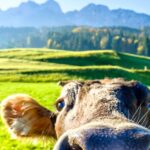
















I prefer grass fed meat, for the flavor, nutrients, and the fact that the cows get to lead a more natural life. The one thought I’ve had about methane gas production is that if you feed an animal foods that it is not designed to digest, their digestive system will naturally produce more gas. That’s no different from what happens with humans when we eat food that we have difficulty digesting.
I asked the butchery at New World supermarket (Timaru) if their beef was 100% grass fed and they said no, it’s 10% grain finished. I asked at Countdown but never received a reply at all. I asked a local butcher the same and he said there’s no way of knowing and all local butchers buy from the same source. This has left me confused. (Haven’t tried Pak’n’Save yet! Do you have any comments on this Libby, and do you know if there is an equivalent of Butcher Box here in New Zealand? Thanks!